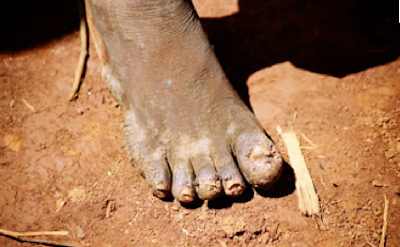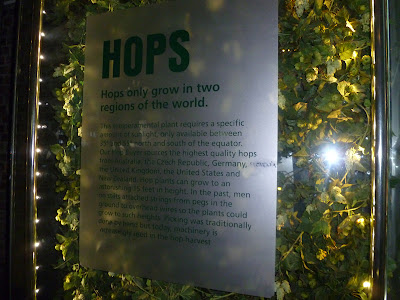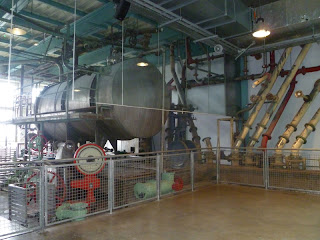"Step 1. Establish partnerships
TOMS works to establish shoe-giving partnerships with humanitarian organisations worldwide that have deep experience and a long-term presence in the countries and communities they serve.
Step 2. Identify communities that need shoes
In partnership with our Giving Partner, we find communities that will benefit most from TOMS shoes due to economic, health and educational needs - and where local businesses will not be negatively affected.
Step 3. Help our shoes have a bigger impact
Children who get TOMS shoes receives them as a part of larger health and educational programs run by our Giving Partners. These programs help children get the care and opportunity they need to jeep them healthy and in school."
Thinking about what they do, I can see the problem which has been raised in some blog posts, such as the one on the 'Good Intentions is not enough' blog, where if they just go and bombard a village with free shoes it will just take away any custom for local shoe stalls or what ever they have and what not. Even so, this is not what TOMS does, they have thought a lot about where they go with the shoes to help, and they don't just give once, they return when possible to places as explained in the facts sections of the Giving Report:
"We learned:
Children grow out of shoes fast! So we aim to give repeatedly when ever possible. Repeat giving allows us to learn more about the needs of the community so we can continue to improve the way we give."
"We are considerate of local businesses.
Going in and trampling the local economy would be downright un-TOMSy. We always try to make sure there won't be any mom and pop shoe makers put out of business by our giving activities."
"We don't give once and leave - we keep giving.
Kids grow out of shoes. So we strive to set up sustainable giving partnerships that allow us to give repeatedly as children grow."
"We don't do it alone.
As of September 2010, TOMS customers have given away 1,000,000 pairs of shoes (awesome), and could only have done so through our incredible Giving Partners on the ground in each location. Of our little family of employees had to do that all themselves, they'd never have time to make new shoes or answer your calls."
"Giving isn't instantaneous.
Once a shoe is purchased, it takes several months for our Giving Partners to order shoes, have them shipped and then place them on children's feet."
"Kids don't make our shoes.
This one is for real cynics out there. Our factories in Argentina, Ethiopia and China are all third-party audited to ensure they employ no child labor, and pay fair wages."
"We don't just 'decide' to start giving shoes to a village.
We're learning a lot, but still rely heavily on our Giving Partners' expertise in the communities they work to determine how and where we give."
Where are the shoes produced? And where do they give them?
According to the Giving Report, the actual TOMS shoes are made in 3 different countries - Argentina, Ethiopia and China, and are distributed in 23 countries. These are:
- United States
- Guatemala
- El Salvador
- Nicaragua
- Haiti
- Honduras
- Peru
- Argentina
- Mali
- Niger
- Uganda
- Rwanda
- Burundi
- Zambia
- Swaziland
- Lesotho
- Ethiopia
- South Africa
- Malawi
- Armenia
- Mongolia
- China
- Cambodia



























































































































